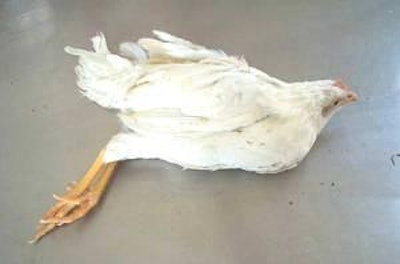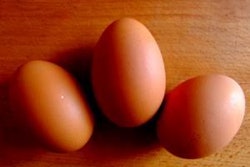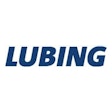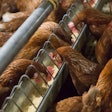
The U.S. egg production industry is enjoying a period of relative calm regarding health and infectious disease. We are fortunate that neither the Asian H5N1 avian influenza nor the H1N1 human influenza pandemic were ever introduced into the U.S. poultry industry. There are no current influenza issues and accordingly routine vaccination against influenza is unnecessary.
It is also fortunate that what appeared to be an introduction of very virulent IBD in the U.S. in early 2009 has not extended beyond the index area as was initially feared. There are no other prevalent disease issues causing serious mortality or production losses for the majority of egg producers.
Routine vaccinations are used by most U.S. producers against Marek’s disease, IBD (Gumboro), Newcastle, bronchitis, AE and pox. Depending on farm history and location, other vaccinations may include ILT, MG, E. coli, coccidiosis and coryza. Layer mortality should generally remain at less than 0.12% per week throughout most of the production cycle.
In older flocks, physical vent injury (prolapse, cannibalism, difficulty passing large eggs) can raise mortality rates to a range of 0.15% to 0.20% per week. Routine postmortem examinations and laboratory investigations are recommended to ascertain causes of mortality, especially when loss rate exceeds the normal range.
E. coli peritonitis
For many years, the layer industry has considered E. coli peritonitis as the most challenging cause of mortality. The characteristic lesion is either an accumulation of wet yolk-like material with acute mortality or a caseous deposit of exudate on the viscera of the body cavity in chronic cases. Bacterial cultures from fresh dead birds will reveal contamination with E. coli bacteria.
Mortality tends to occur at two peaks during the production cycle. The first is in early production, around peak, and the second appears later in lay, typically after 50 weeks of age. Early-lay peritonitis is often associated with respiratory diseases occurring shortly after housing in multi-age complexes. These include mycoplasmosis (MG or MS) and bronchitis, which have become endemic in large layer complexes and induce respiratory stress shortly after housing. This can easily be demonstrated by serology and confirming mycoplasma seroconversion or an increase in bronchitis titer.
Poor air quality contributes to the respiratory challenges and high levels of dust and ammonia exacerbate the condition. Peritonitis at a later stage in the cycle is more often associated with vent-related trauma (prolapse and cannibalism) that the hen initially survived, but resulted in an ascending infection of the oviduct to the ovary and then extension to surrounding organs.
Peritonitis can be a frustrating disease to control because it is usually a secondary infection to the factors discussed above, which are difficult to eliminate from the environment of the flock. Antibiotics can be ameliorative, although restricted in use by FDA rules. The early type of peritonitis is most amenable to antibiotic treatment, and is most successfully treated early in the course of the disease.
Previously, some producers with extensive ongoing losses administered autogenous E. coli bacterins to their flocks with varying success. Many serovars of E. coli can cause peritonitis, but the killed bacterin only protects against the type it is specifically made from. Autogenous products also presented other technical and regulatory challenges.
Recently, a live genetically-modified gene deleted E. coli vaccine was licensed by Fort Dodge Animal Health (now Pfizer Animal Health) that is much easier to administer, provides a good spectrum of cross-protection against multiple types of E. coli, and has been commonly adopted by the U.S. layer industry. Most egg producers consider that this vaccine and possibly improved environmental conditions resulting from upgraded ventilation and chlorination of drinking water have reduced the incidence rate and severity in their flocks.
Laryngotracheitis
Many unprotected U.S. layer flocks undergo ILT (infectious laryngotracheitis) challenge and therefore it is now a routine to vaccinate with one of several types of available products. ILT can be difficult to distinguish clinically from the diphtheritic (“wet”) form of fowl pox affecting the trachea. Microscopic examination of affected tracheas should always be done to arrive at a firm diagnosis before making significant decisions regarding treatment or vaccination.
Live CEO (chick embryo origin) vaccines have the potential to spread between vaccinated and susceptible birds and regain virulence as they continue to spread among and within flocks. For this reason, if the administration of vaccine does not achieve adequate uniformity in protection, there can be excessive post-vaccination reaction and clinical outbreaks will occur.
Safer alternative vaccines include a TC (tissue culture) live product that does not appear to spread and gain virulence (Intervet Schering Plough LT-I-Vax) but a single dose is frequently inferior to CEO vaccines in providing protection against severe challenge.
Two live vectored vaccines, a pox vectored product from CEVA-Biomune (Vectormune FP-LT) and an HVT vector from Intervet Schering Plough (Innovax HVT-LT) are now available. These relatively new vectored products contain only some genes of the ILT virus that have been genetically engineered into the host pox or HVT virus and are therefore completely free from any ILT reaction or potential for reversion and spread.
For optimal protection using these vectored products, the pox or HVT vector vaccine virus should be the first ILT product to be administered and should not be mixed with either pox or HVT viruses as applicable at the same time. The U.S. layer industry has adopted vectored vaccines as a safe and effective alternative for many situations.
Focal duodenal necrosis
FDN (focal duodenal necrosis) is a relatively newly recognized disease in U.S. layers. Lesions are relatively minor compared to some other types of enteritis and consist of small dark patches (described as looking like a cigarette burn) in the mucosa of the duodenum, the first loop of intestine surrounding the pancreas. Lesions are normally not visible in birds that have died, so representative live birds must be sacrificed and immediately examined for the presence of these gut lesions.
The disease does not seem to cause any mortality, but was initially associated with a reduction in egg size. More recently, some affected flocks have demonstrated substandard rates of egg production.
The cause of this disease has not been clearly identified, but there is suspicion it may be associated with a Clostridium spp. infection. Antibiotics such as tylosin and bacitracin are effective in treating the disease, and some work suggests that competitive exclusion products or combinations of pre- and probiotics may be effective in preventing or reducing the impact of infection. U.S. egg producers are becoming more aware of this condition and examine flocks when egg size or production problems emerge.
Osteomalacia
Soft bones (osteomalacia) are often identified as a cause of mortality, perhaps in just one or a few dead birds when routinely screening mortality. In some cases osteomalacia may be responsible for excessive losses within a flock. Lesions consist of a rubbery, crooked keel bone, often in the shape of an “S”, a collapsed rib cage with enlarged cartilage joints, and weak, easily broken long bones (the head of femur breaks off when disarticulating the hip joint).
It is clear that affected flocks show decreased mineralization of bones but post-mortem examination cannot distinguish among calcium, phosphorus, or vitamin D3 deficiency as possible causes. If calcium or vitamin D3, are the predominant deficiencies egg shells are poorly mineralized and are thin.
It is also unknown why some hens become so severely affected that reabsorption of mineral from the spinal column and legs results in paresis progressing to paralysis and recumbency, followed by death from dehydration. This may occur while the bulk of the flock is totally unaffected. Most nutrient needs of layers are expressed in grams/bird/day and vary by breed and age of the flock.
By accurately measuring the feed intake of a flock, the percentage of each nutrient needed in the feed can be calculated. For example, if we accept the Hy-Line W-36 Management Guide recommendation that a 26-week-old flock should consume 4.0 gm of calcium per hen per day, and we know the flock is consuming 20 lbs/100/day (91 gm/bird/day), the feed should contain 4.4% calcium (4.0/91x100) in order to meet required daily intake. This approach should be applied to all the major nutrients as outlined in the breeders’ management guides.
When an unusual incidence of soft bones is observed among mortality, the levels of calcium, phosphorus, and vitamin D3 in the diet should be examined with appropriate assay to confirm accuracy of mixing and conformity to formulas. Water quality should be assayed with special reference to pH, hardness and electrolyte content in comparison to accepted standards.
Marek’s disease
Prior to the 1980s, Marek’s disease (MD) would have been considered the principal disease problem in the U.S. layer industry. At present, MD is fortunately well controlled. Most of the current success can probably be attributed to the effective vaccine protection provided by the Rispens CVI-988 vaccine that most U.S. egg producers now use. This Type-1 MD vaccine has been shown in Hy-Line challenge trials to provide much better protection than the previously used HVT/SB-1 vaccine combination.
Vaccine alone does not provide complete protection to prevent future clinical emergence of MD infection. Early exposure before immunity is established is a cause of “breaks” and all-in-all-out placement is advised in areas with a high potential for challenge with virulent strains of MD.
The field virus has previously shown the ability to adapt to HVT vaccines and eventually become resistant leading to increasing frequency of field outbreaks. It is hoped that will not happen with Rispens vaccine, but the industry has to be ready in the event of the emergence of new and more virulent strains.
Research will likely lead to the next generation of improved Marek’s vaccines, but good flock management to limit the cycling of this virus between susceptible chicks that are not yet immune and older pullets or layers that are likely shedding the virus.
Suppression of the Marek’s virus relies on a functional immune system, which must be protected against damage caused by IBD (Gumboro) or CAV (chick anemia virus). Thorough cleaning and disinfection of brooder houses will allow young flocks to establish vaccine-induced immunity to Marek’s and IBD before there is significant field challenge.
Deficiencies in basic management and biosecurity will lead to a cascade of disease events (IBD → MD → mortality, poor production) and result in flocks producing at less than their genetic potential.
Summary
Egg producers in the U.S. are currently fortunate that catastrophic diseases (HPAI and VVND) have been eradicated and are excluded from our industry. Erosive diseases which are endemic in the U.S. are controllable applying immunization and biosecurity in combination with adequate nutrition and acceptable housing and environmental management.
Most of the rate limiting conditions which impact production are multi-factorial in origin and reflect deficiencies in one or more of the causal factors. A comprehensive approach to flock health requires a coordinated application of modalities to obtain optimal production reflecting the genetic potential of commercially available breeds.
















